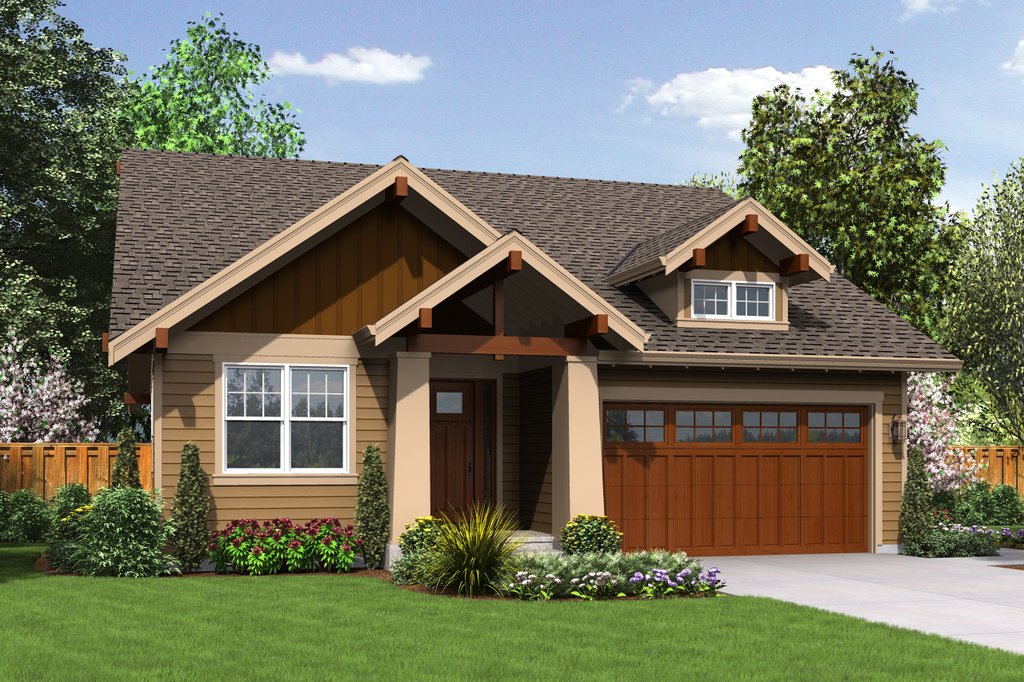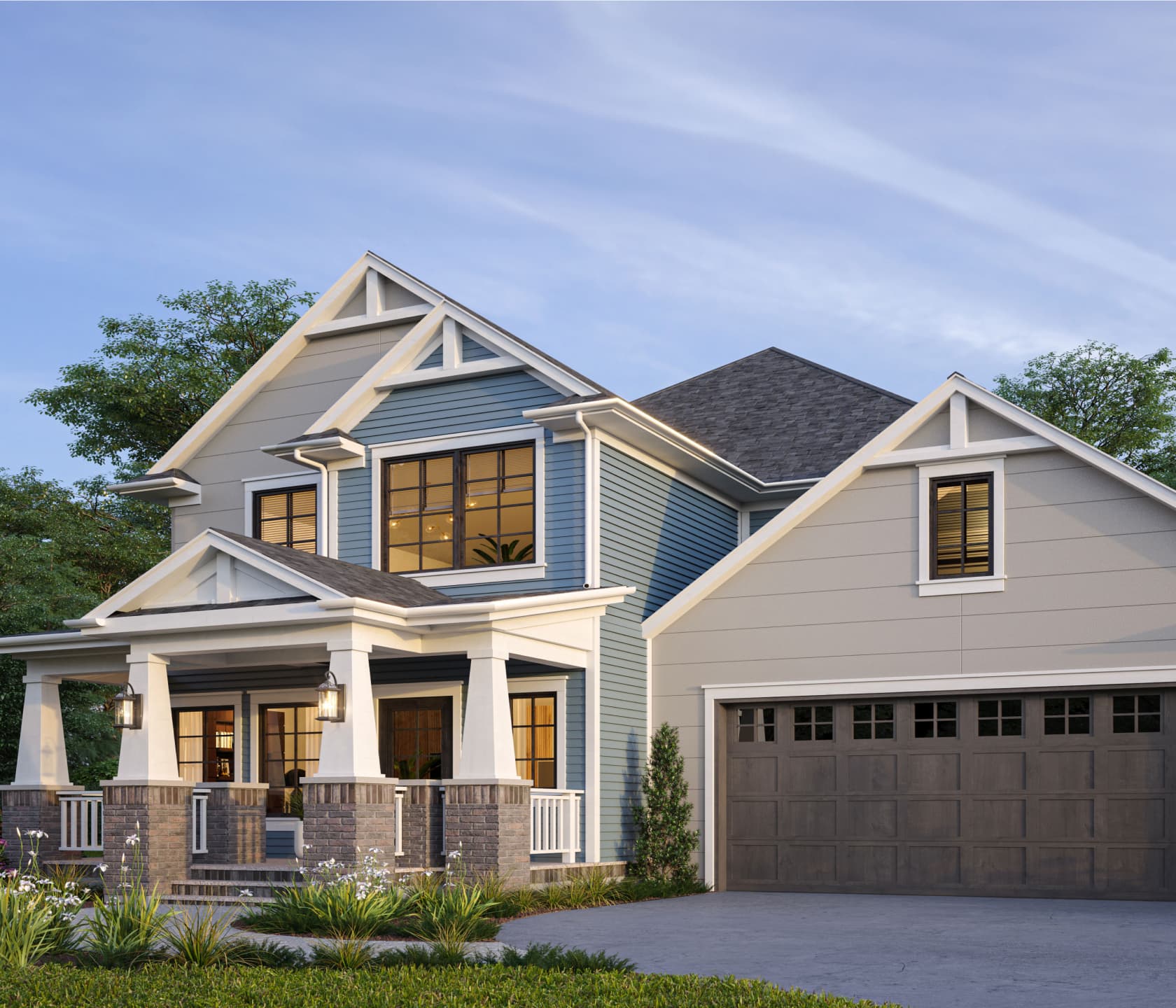Exploring the Sustainability Features of a craftsman style house
Wiki Article
The Role of Arts & & Crafts Architects in Elevating Architectural Services in Residential Design
Arts and Crafts architects greatly influence residential design via their commitment to craftsmanship and sustainability. They prioritize handcrafted information and all-natural products, which improve both aesthetics and community identification. By including clients in the design process, these architects develop one-of-a-kind living rooms that reverberate with personal tastes. This strategy elevates concerns regarding the future trajectory of residential architecture and its prospective effect on community characteristics. craftsman style house. What exists ahead for this timeless layout approach?
The Principles of Arts and Crafts Architecture
The essence of Arts and Crafts architecture hinges on its commitment to craftsmanship and simplicity. This architectural motion arised in the late 19th century as a response to industrialization, highlighting the value of handcrafted details and natural materials. The concepts of Arts and Crafts architecture focus on functionality and harmony with the atmosphere. Frameworks usually include low-pitched roof coverings, vast eaves, and revealed rafters, advertising a feeling of unity with nature.Artisans played a significant role in this style, often incorporating attractive aspects like discolored glass, tiles, and woodwork, which mirror regional craftsmanship. The color combination often tends to be earthy and controlled, permitting structures to blend seamlessly right into their surroundings. In addition, the layout motivates open layout and communal areas, cultivating a sense of togetherness. Overall, the concepts of Arts and Crafts architecture celebrate the appeal of simplicity and the importance of human link to both nature and community.

Sustainable Practices in Residential Design
While the demand for environmentally liable living proceeds to expand, sustainable practices in residential layout have actually acquired substantial traction amongst architects and home owners alike. Architects are significantly integrating energy-efficient innovations and sustainable products right into their designs, intending to minimize carbon footprints and boost power conservation. Techniques such as passive solar design, green roofs, and rainwater harvesting systems are coming to be common elements of modern property architecture.The selection of locally sourced products reduces transport exhausts and supports regional economic situations. Emphasis on natural light and air flow not just boosts interior air top quality yet also minimizes reliance on synthetic lights and environment control systems. These lasting practices mirror a dedication to preserving the atmosphere while supplying home owners with comfortable, reliable space. As understanding of ecological concerns expands, the integration of sustainability in domestic style is positioned to end up being a specifying feature of modern architecture, led by the concepts established by Arts and Crafts architects.
Personalization and Personalization in Home Layout
Modification and personalization in home layout have actually become crucial patterns in reaction to the growing desire for unique living settings that show specific tastes and way of lives. House owners progressively seek to tailor spaces that resonate with their individualities, leading to an extra purposeful link with their space. craftsman style house. This activity urges architects to involve customers in the layout procedure, promoting partnership that guarantees this hyperlink the last end result symbolizes the house owner's visionAspects such as bespoke formats, personalized materials, and tailored coatings enable a diverse series of expressions in household style. Arts and Crafts architects play a critical role in this advancement, highlighting craftsmanship and high quality. Their concentrate on incorporating creative aspects with performance assurances that each home is not only aesthetically pleasing but also distinctly suited to the citizens' requirements. This emphasis on personalization enhances the total domestic experience, producing areas that are both personal and long-lasting.
The Effect of Arts and Crafts Architects on Community Visual Appeals
As communities advance, the influence of Arts and Crafts architects greatly forms their aesthetic landscape. By emphasizing handmade details, all-natural products, and conventional construction strategies, these architects create homes that reverberate with their surroundings. Their layouts commonly integrate regional vegetations, appearances, and shades, fostering a feeling of harmony in between built settings and nature.The Arts and Crafts activity promotes area identity with building continuity. By motivating homeowners to embrace comparable design principles, areas develop a cohesive personality that enhances visual charm. This building uniformity not only improves the aesthetic experience however also instills a feeling of satisfaction amongst locals.
In addition, the focus on sustainability and craftsmanship in Arts and Crafts architecture lines up with modern-day worths, making these designs appropriate in modern setups. Eventually, Arts and Crafts architects contribute significantly to the overall elegance and cultural honesty of neighborhoods, leaving a long-term effect on their visual heritage.

Future Trends in Arts and Crafts Architecture
With a raising focus on sustainability and personalization, future patterns in Arts and Crafts architecture are positioned to blend typical craftsmanship with modern innovation - craftsman style house. Architects are most likely to focus on eco-friendly products, making use of reclaimed timber and all-natural stone to boost the sustainability of residential designs. The assimilation of clever home innovation will become commonplace, permitting individualized living experiences without jeopardizing aesthetic honestyFurthermore, the get more resurgence of artisanal techniques will cultivate a renewed gratitude for handmade components, such as bespoke cabinets and customized floor tile job. Future designs might also mirror an emphasis on community-oriented spaces, encouraging interaction and link among residents. Outdoor living locations will certainly gain importance, flawlessly integrating nature right into the home environment. As Arts and Crafts architecture advances, it will remain to honor its roots while adjusting to contemporary requirements, creating unified rooms that reflect specific worths and way of lives.
Regularly Asked Questions
What Motivated the Arts and Crafts Movement in Architecture?
The Arts and Crafts motion in architecture was influenced by Click Here a response against industrialization, stressing handcrafted high quality, natural materials, and a go back to typical craftsmanship, aiming to develop unified, functional areas that commemorated virtuosity and originality.How Do Arts and Crafts Architects Collaborate With Clients?
Arts and crafts architects work together with customers via open dialogue, prioritizing individual demands and appearances. They emphasize craftsmanship and sustainability, promoting a partnership that incorporates the customer's vision with the designer's know-how in layout and products.What Products Are Commonly Used in Arts and Crafts Homes?
Common products in Arts and Crafts homes consist of all-natural timber, rock, and block, highlighting workmanship and natural appearances. These components develop a cozy, inviting environment, showing the motion's commitment to quality and simplicity in style.Just how Do Arts and Crafts Layouts Improve Indoor Living Areas?
Arts and Crafts styles enhance indoor home by advertising all-natural light, open layout, and handcrafted details. These elements cultivate a cozy, welcoming environment, motivating a link in between locals and their settings via thoughtful, functional looks.What Are Some Famous Instances of Arts and Crafts Architecture?
Famous examples of Arts and Crafts architecture include the Gamble Home, Greene and Greene's work of art in California, and the Robie House by Frank Lloyd Wright. These structures showcase handcrafted information and consistency with nature, defining the motion's significance.Report this wiki page